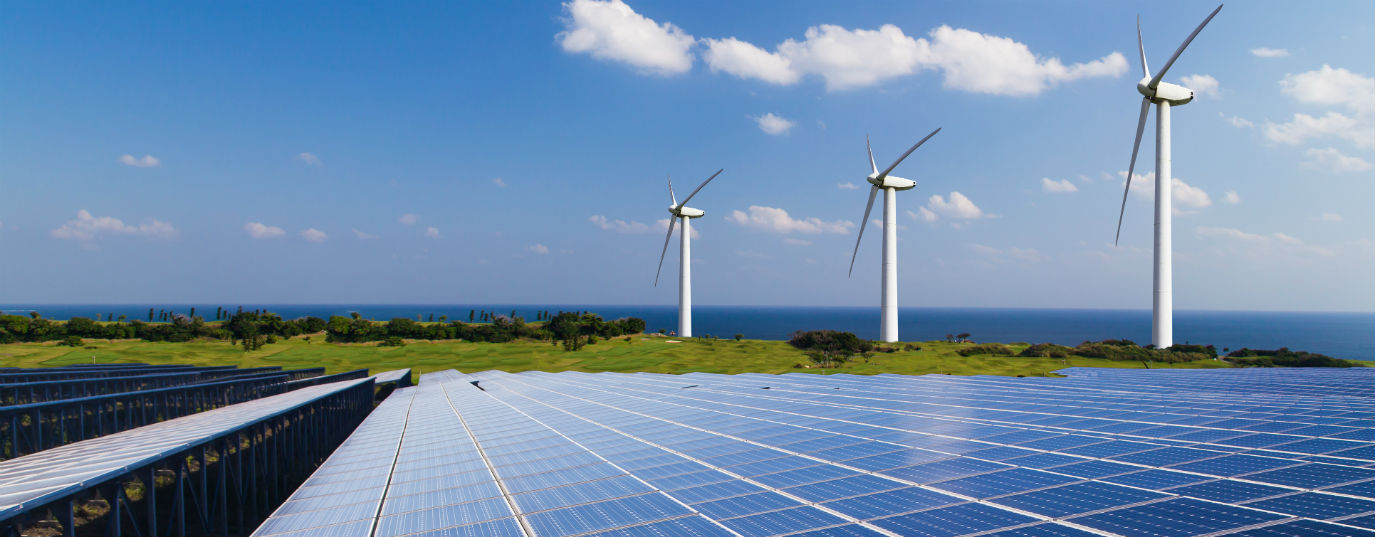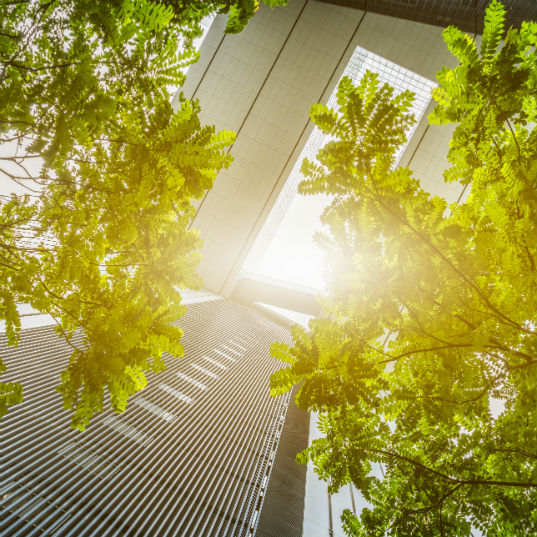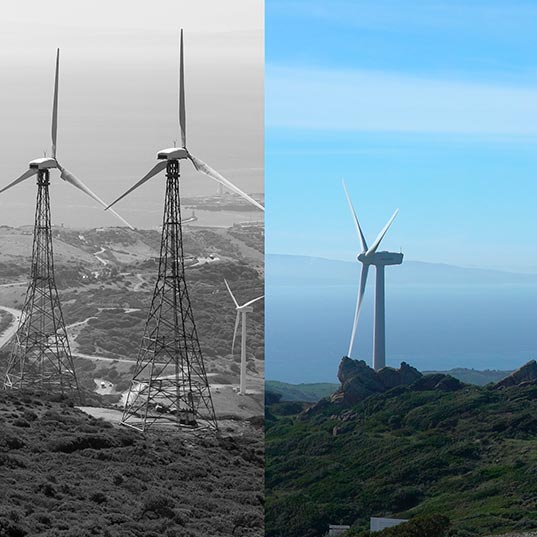Trends in renewable energies, construction and water
Discover the new trends in renewable energy, construction and water management to achieve sustainable development and respect for the environment
The challenges facing the planet also represent big opportunities for the energy, construction and water sectors. In this article, we analyze five fronts that will become highly important in global development over the next few years: sustainable electricity generation, smart cities, the circular economy, sustainable and efficient infrastructure, and access to food and water.
Clean electricity generation
First, a clear transition is under way toward the generation of clean electricity in response to the need for an economy that is more respectful to people and the environment. Renewable energies will make up nearly 60% of new generation capacity installed globally and investment in renewables is expected to amount to more than 7 trillion dollars between now and 2040.
All countries must make clean electricity production a bigger part of their energy mix. It is particularly important that developing countries can competitively access renewable technologies as an alternative to using cheap fossil fuels. The costs of installing renewable energies will continue to decrease, making them even more attractive. This transition will also lead to improvements in the smart grids (intelligent distribution networks) that transport energy to consumers in real time.
In parallel, distributed generation (electricity production in locations closer to the consumer) will grow. Its advantages include reducing energy losses during transmission and less environmental pollution.

Transformation of towns and cities into smart cities
The second trend will be the transformation of urban centers into smart cities. These cities will be inhabited by connected people benefiting from systems powered by artificial intelligence, living and working in sustainable buildings, in environments blessed with green spaces.
In 2008, the number of people living in cities was greater than those living in rural environments. It is forecast that by 2050 almost 70% of the global population will live in cities. This relentless urbanization is placing new demands on infrastructure management, accessibility, efficient resource use, sustainable mobility, clean energy supply and management of water and sanitation services. Cities will be increasingly powerful players and need to ensure the quality of life of their inhabitants, simultaneously guaranteeing social sustainability with respecting the environment.
The circular economy
Thirdly, the transformation toward a circular economy in the production chain is a phenomenon we will see over the coming years. The circular economy is based on process innovation and product design, so that sub-products and waste can be reused and exploited as items for consumption in their own right.
For this, companies need to rethink the design of products and how to optimize the recovery of components. Many industries are already applying such criteria, including the textile, construction and technology sectors.
More sustainable and efficient infrastructure
In the building sector, the quest is under way to find more sustainable and efficient construction methods and this will continue in the near future. Two strategies within this trend need highlighting:
- On the one hand, the use of tools that allow better information management throughout the whole project life cycle, such as BIM (Building Information Modeling). This process, based on 3D intelligent digital modeling, allows an inventory to be compiled of the elements of a building in order to achieve a more efficient construction and maintenance.
- On the other hand, the use of new, more sustainable materials (such as those derived from recycled materials, or composite materials) and new designs reduce costs and the impact on the surrounding environment.
Access to food and water
Finally, we will soon be able to observe changes to the production models for, and better access to, food and water. By 2050, water demand will have increased by 55% and food demand by 60% since the year 2000. Water scarcity and water stress conditions will increasingly affect more people worldwide and so end-to-end water cycle management is going to play a major role both in developed and developing countries.
Furthermore, food production is one of the industries that has the most impact on nature. Sustainable food production is a broad research field and a model will need to be found to sustain an ever-growing population.
Companies working these sectors will have to respond to all these challenges and their innovation will be key to building a society that is more sustainable and respectful to the environment and people.







